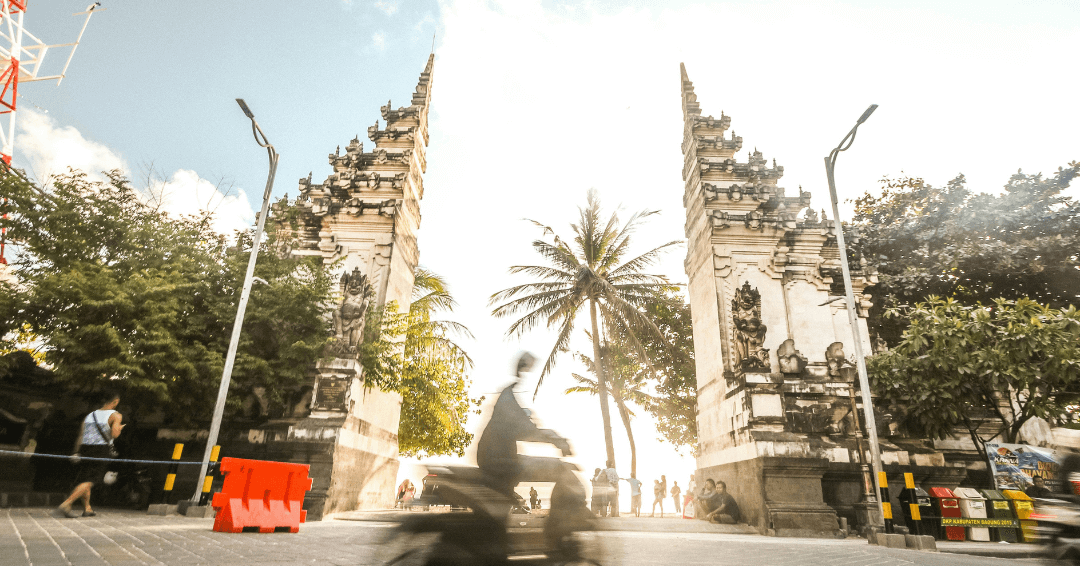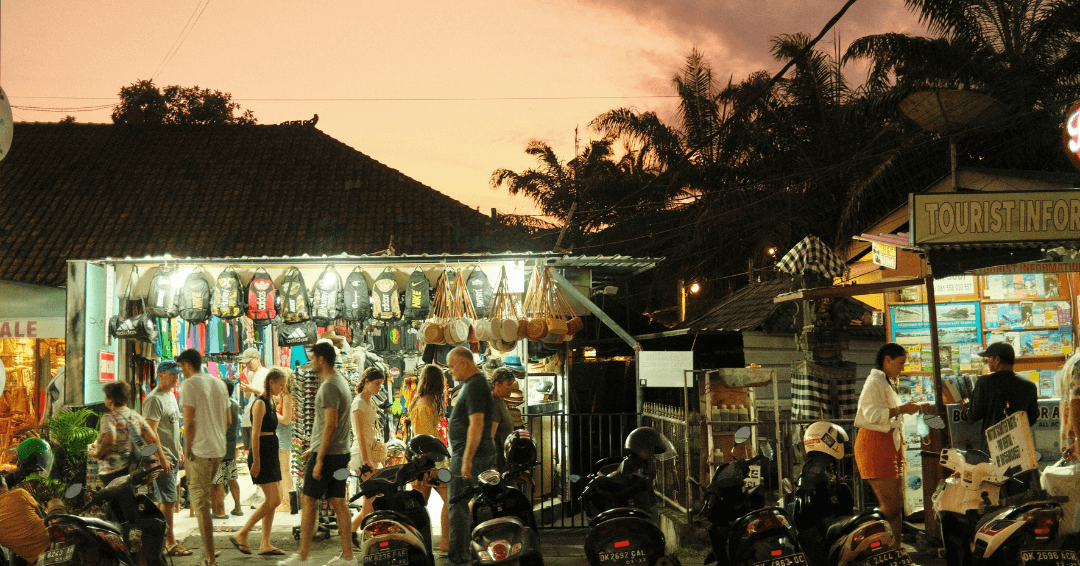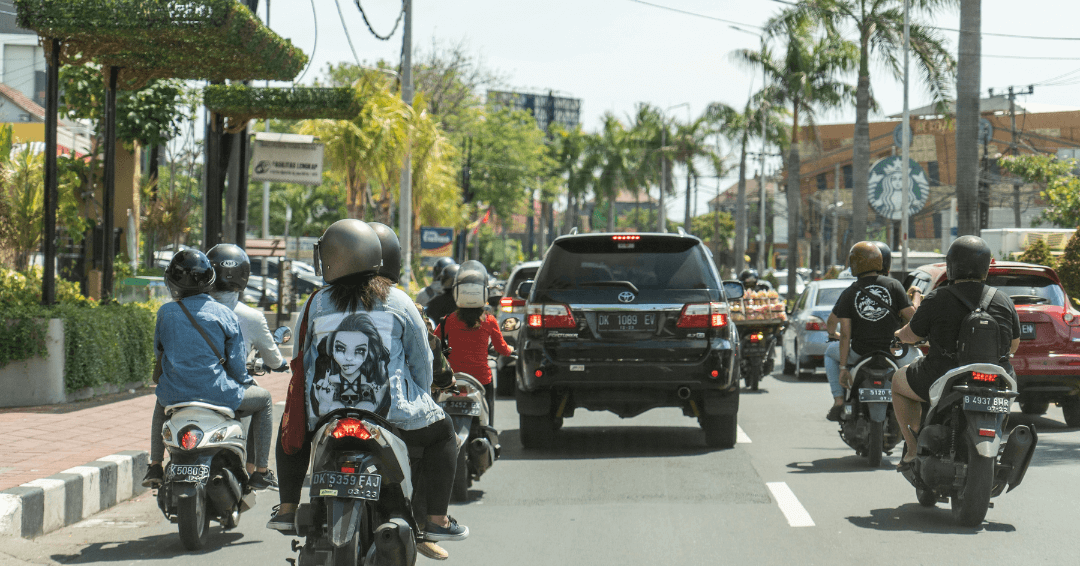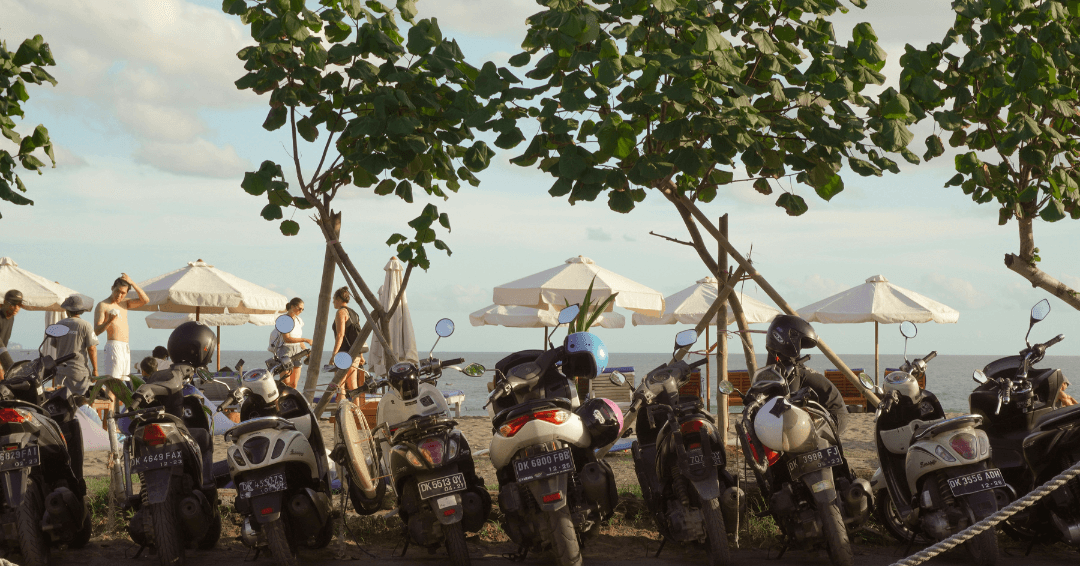Driving a rented scooter around Bali is a dream for many tourists heading to this island paradise, but with the often chaotic traffic in Bali’s cities, riding a scooter can be intimidating and dangerous, especially for inexperienced drivers. Scooters are one of the most convenient ways to get around Bali, but if you’re not smart about when, where and if you ride, it can end in disaster. Hundreds of young Australians are injured or killed on the streets of Bali every year so this topic is not one to be taken lightly. The best way to protect yourself should the worst happen and you end up in an accident, is to make sure you’ve brought the right travel insurance along for the ride. So, what else do you need to know and consider before hopping on the scooter? Let’s discuss!
If you’re not licenced to drive a bike in New Zealand you’re not licenced to drive it in Bali. This requirement likely won’t prevent you from renting the bike in the first place, but if you’re stopped by the police, or end up in an accident, being unlicenced could derail your holiday entirely. Ticket prices for driving unlicenced can vary in Bali, depending which officer you meet, and your travel insurance will not pay out if you’ve hurt yourself while driving unlicenced so make sure you’re legal before you set off.
In terms of our travel insurance cover, if you are in control of a motorcycle or scooter with an engine capacity greater than 125cc, you need to hold a current, valid New Zealand motorcycle licence. If you are riding a motorcycle or scooter with an engine capacity lower than 125cc, you need to hold a current, valid New Zealand drivers licence.
You also need to be aware that cover will not be provided to you if you are a passenger on a moped, scooter or motorcycle, and the person in control does not have a valid motorcycle licence for that country.
Please note that it’s compulsory to wear a helmet while riding a motorbike or scooter in many countries. Regardless of local requirements, 1Cover advises you to wear a motorcycle helmet whenever you are a rider or passenger on a scooter or motorbike.
This isn’t a requirement, but if you’re staying in Bali long term it may be worth the paperwork to get yourself an Indonesian licence. You’ll first have to get an International Drivers Permit (IDP). There’s lots of companies claiming to sell these but there is only one agency actually licenced to do so. The IDP lasts for only 12 months and costs about $50, so it's easy to see why people opt for an Indonesian licence for long term trips. Once you get your IDP some people choose to use an agent to get their Indonesian licence. It is not a difficult process to do independently, you just need:

As soon as you book your trip to Bali you need to purchase your travel insurance. Travel insurance will cover you for lots of things, but none will cover you for driving a rented scooter if you are not licenced to do so, or are doing so under the influence of alcohol or drugs.1Cover’s Bali policies are super affordable and will be there to look after you should the worst happen, so make sure you pack travel insurance before you go.

Before you ever arrive in Bali you need to research where you’re going to rent your scooter from. Prioritize reliability, safety, and transparency. Look for rental shops with positive reviews from fellow travelers or locals, especially around the standard to which the scooters are maintained. Opt for businesses that offer clear rental agreements, including comprehensive cover and transparent pricing. Consider the shop's location; choose one located near your accommodation for ease of access and assistance in case of emergencies. Visit the rental shop in person and inspect the fleet of scooters, to make sure they are in good condition before you drive away.
The roads in Bali look like a chaotic free for all, and while that may be partially true, there are some rules and customs you should abide by. In short, don’t stop. Bikes fill in the empty spaces between cars on Bali’s roads and if you stop you’ll just pile up bikes that were assuming you would keep moving to fill the spaces. It’s important to be assertive and decisive, especially when moving through intersections, while also making sure you’re being defensive and keeping an eye out for dangers. Lanes aren’t exactly the same as they are in New Zealand, so it’s important to hold your line and make sure you drive straight at all times; if there's 4 bikes riding side-by-side, veering into someone else's line could be disastrous.

Generally speaking, bikes in Bali are Honda or Suzuki, 100-150cc step-through automatic scooters. They’ll accommodate two people and have flip up seat covers to store your helmet and a small bag. There are some places that will offer you higher performance bikes but that is pretty pointless in Bali as you’re going to need to drive slowly around the streets.
Before you jump on a scooter in Bali, it's smart to think about your riding experience. If you're a newbie to two-wheeled adventures or haven't ridden much in busy areas, it might be worth reconsidering. Bali's streets can get pretty chaotic, and maneuvering through traffic takes some skill. A seasoned rider with some experience under their belt, will likely feel more comfortable handling the chaos. Just be honest with yourself about your skills and confidence level.

Navigating the driving conditions in Bali requires a lot of awareness and an understanding of the island's unique traffic system. The roads, especially in urban areas and popular tourist spots, can be bustling with a mix of scooters and cars. Lane discipline may not always be strictly adhered to, and speed limits are sometimes treated more like guidelines. However, behind the apparent chaos, there is a rhythm and flow to the traffic. It's important to remain vigilant and adaptable, anticipate the movements of other drivers and stay prepared for sudden stops or maneuvers. Road surfaces can vary, from well-maintained roads to uneven narrow lanes with potholes. Don’t forget you’ll also have to contend with pedestrians, cyclists, and the occasional livestock crossing the road. Driving in Bali can be stressful and dangerous but keep your wits about you and you’ll be fine.

Much like driving, parking is a bit of a free-for-all in Bali. Just apply rules of common courtesy, don’t park in people's driveways, or in front of their doors and don’t block other bikes in. No one will be shy about moving your bike if you’ve parked in their way, and you don’t need to be shy either, but this isn’t ideal and you do risk damage to your bike or others if you’re caught in this position. If you’re heading away from Bali for a short period, but want to keep your scooter, you can park it at the airport for as little as $2 a day, which will definitely be cheaper than a taxi fare to and from the airport.
The cost of renting a scooter in Bali can vary depending on the rental company, type of scooter, and location. On average, you can expect to pay between 50,000 to 80,000 Indonesian Rupiah (IDR) per day for a standard scooter rental. Prices may be slightly higher in popular tourist areas such as Kuta, Seminyak, or Ubud, especially during peak seasons. Weekly or monthly rentals often offer more competitive rates, with discounts available for longer rental periods. It's important to inquire about additional costs such as insurance, helmet rental, and fuel. Some rental shops may include basic insurance coverage in the rental fee, while others may offer it as an optional extra for an additional fee. Helmets are typically provided with the rental, but if you require additional helmets for passengers, there may be an extra charge, while fuel costs are relatively low.
So those are our top tips if you’re wanting to scooter your way around Bali! While it’s definitely a fun and convenient way to get from A to B, and take in the culture and landscapes of Bali on your way, it’s so important to be smart and safe about it. If you think you’re experienced enough to battle the Bali streets make sure you’re renting a good scooter from a reputable shop and that you are covered by travel insurance for any accidents that may pop up.
If you have any other questions or queries, please visit our Contact Us page. If you are experiencing an emergency, please use the details on our Emergency Assistance page.